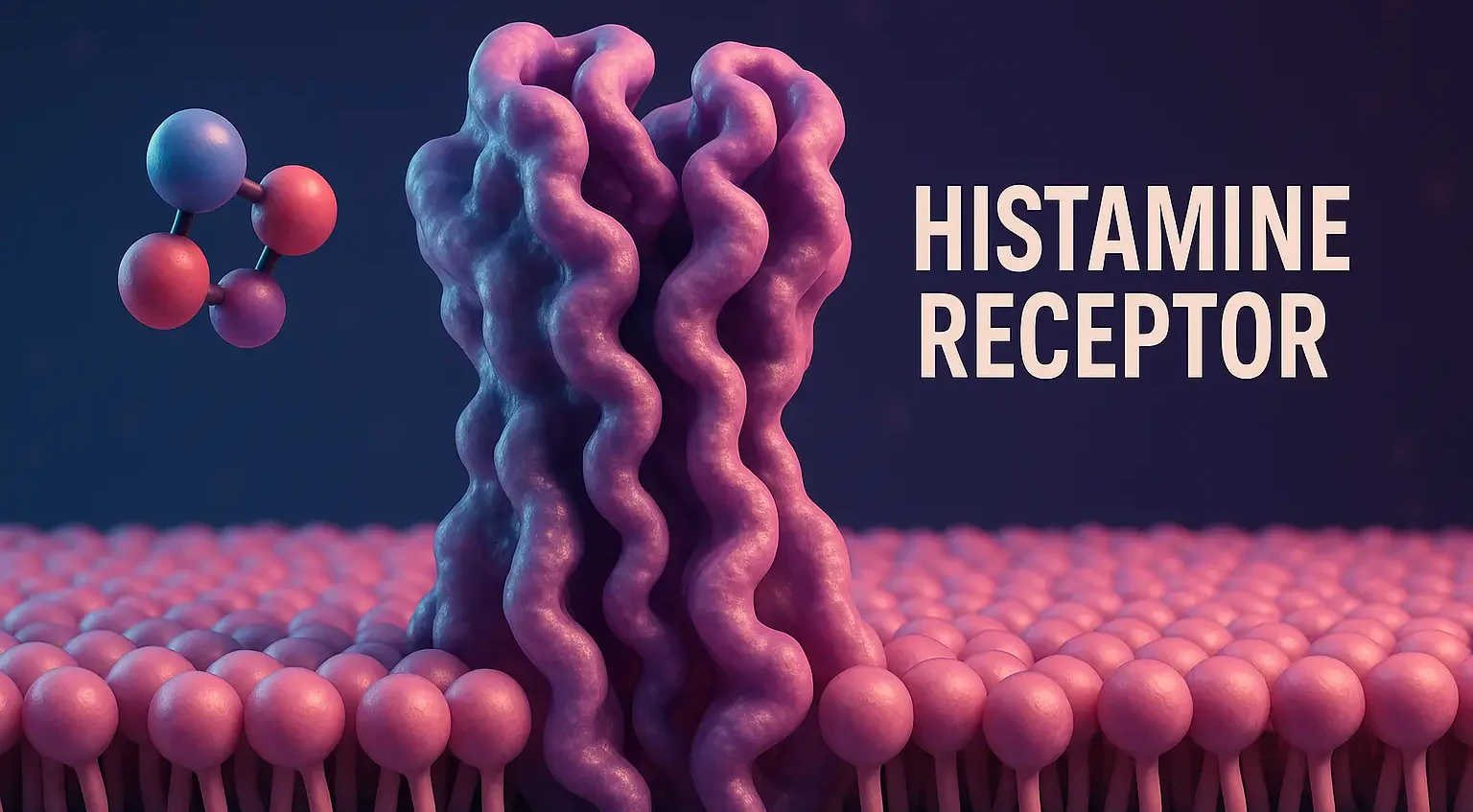This article explains about the histamine receptor their types functions and how they influence allergic reactions immune responses and other physiological effects.
Histamine Receptor:
- Histamine exerts its effects by binding to four types of histamine receptors, all of which are G protein-coupled receptors (GPCRs):
- H₁ Receptor
- H₂ Receptor
- H₃ Receptor
- H₄ Receptor
- Each receptor subtype has distinct distributions and functions in the body.
H₁ Receptor
Mechanism:
- Coupled to Gq proteins; activates phospholipase C, leading to increased intracellular calcium.
Functions:
- Vasodilation: Causes dilation of blood vessels, increasing blood flow and redness.
- Increased Vascular Permeability: Leads to edema and swelling.
- Bronchoconstriction: Constriction of airway smooth muscles, affecting breathing.
- Sensory Nerve Stimulation: Causes itching and pain.
Distribution:
- Smooth Muscles: Respiratory tract, gastrointestinal tract.
- Endothelial Cells: Lining of blood vessels.
- CNS Neurons: Involved in sleep-wake regulation, appetite, and cognition.
- Immune Cells: T cells, B cells, eosinophils.
H₂ Receptor
Mechanism:
- Coupled to Gs proteins; stimulates adenylate cyclase, increasing cyclic AMP (cAMP).
Functions:
- Gastric Acid Secretion: Stimulates parietal cells to secrete hydrochloric acid.
- Cardiac Effects: Increases heart rate and contractility.
- Smooth Muscle Relaxation: Vasodilation in blood vessels.
- Immunomodulation: Inhibits antibody synthesis and T-cell proliferation.
Distribution:
- Gastric Parietal Cells: Stomach lining.
- Cardiac Muscle: Heart tissue.
- Vascular Smooth Muscle: Blood vessels.
- CNS: Neurons regulating various functions.
H₃ Receptor
Mechanism:
- Coupled to Gi/o proteins; inhibits adenylate cyclase, decreasing cAMP.
Functions:
- Neurotransmitter Release Inhibition: Modulates release of histamine, acetylcholine, norepinephrine, and serotonin.
- Autoreceptor Function: Regulates histamine synthesis and release in neurons.
Distribution:
- CNS: Predominantly in the brain, affecting sleep, appetite, and cognition.
- Peripheral Nervous System: Sensory neurons.
H₄ Receptor
Mechanism:
- Coupled to Gi/o proteins; similar signaling pathways as H₃ receptors.
Functions:
- Chemotaxis: Attracts immune cells like eosinophils and mast cells to sites of inflammation.
- Immunomodulation: Influences cytokine production and immune cell activation.
Distribution:
- Bone Marrow: Hematopoietic cells.
- Immune Cells: Mast cells, eosinophils, dendritic cells.
- Spleen and Thymus: Involved in immune responses.
Distribution of Histamine Receptors in the Human Body
| Receptor | Location | Primary Functions |
| H₁ | – Smooth muscles (bronchi, GI tract) – Endothelium – CNS neurons – Immune cells |
– Allergic response – Bronchoconstriction – Vasodilation – Sensory nerve stimulation |
| H₂ | – Gastric parietal cells – Heart – Vascular smooth muscle – CNS neurons |
– Gastric acid secretion – Cardiac stimulation – Vasodilation – Immunomodulation |
| H₃ | – CNS neurons – Peripheral nerves |
– Neurotransmitter release inhibition – Sleep regulation |
| H₄ | – Bone marrow – Immune cells (mast cells, eosinophils) – Spleen – Thymus |
– Chemotaxis of immune cells – Modulation of immune response |

